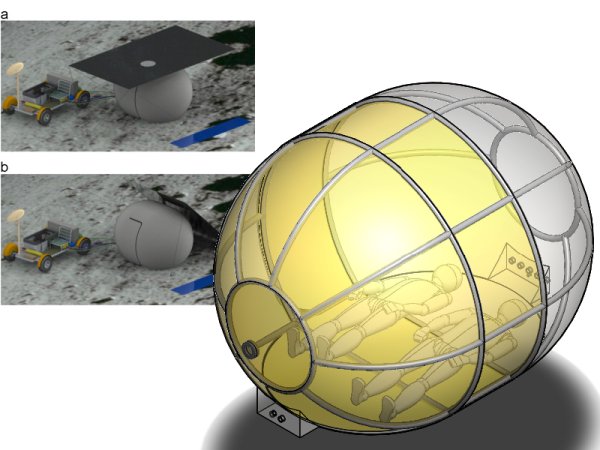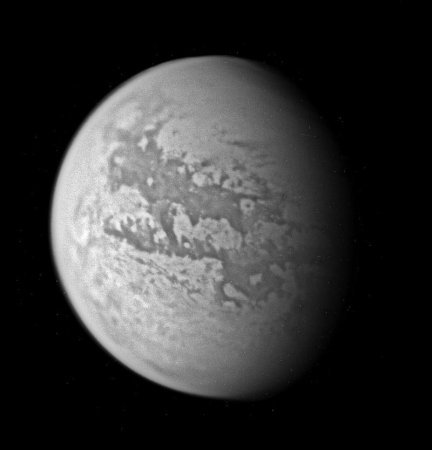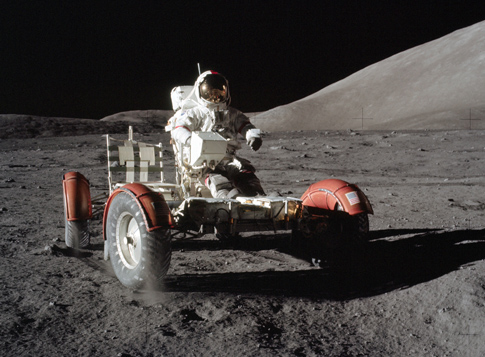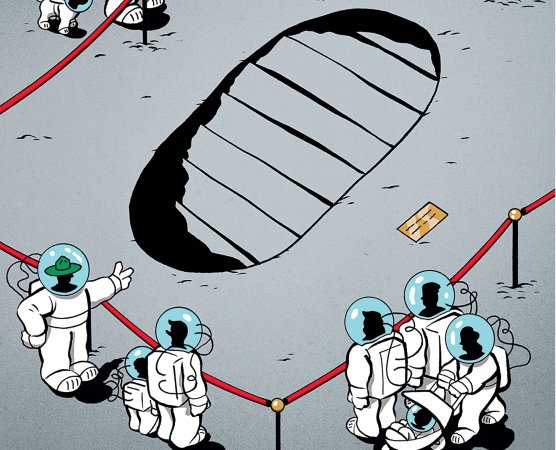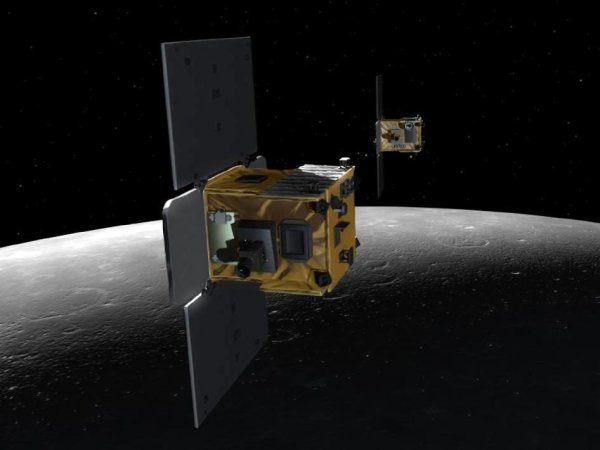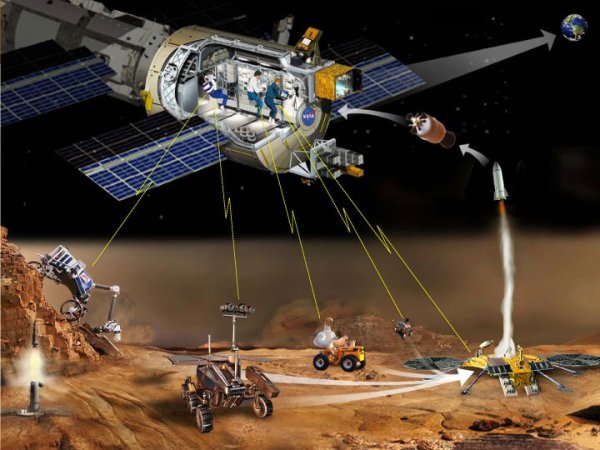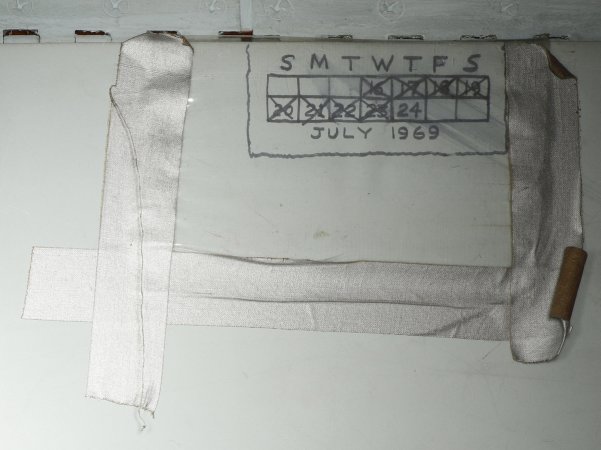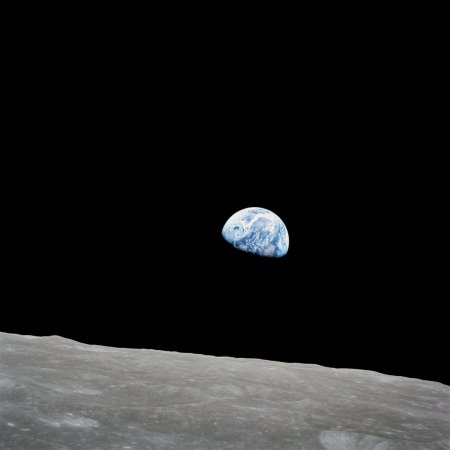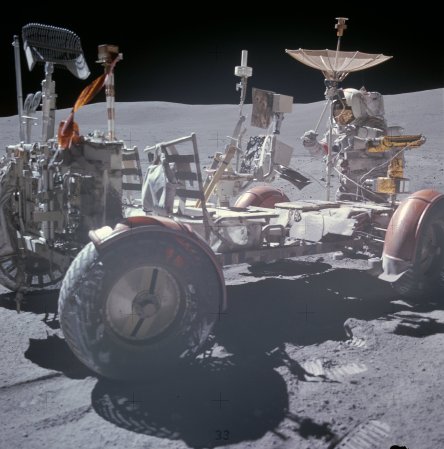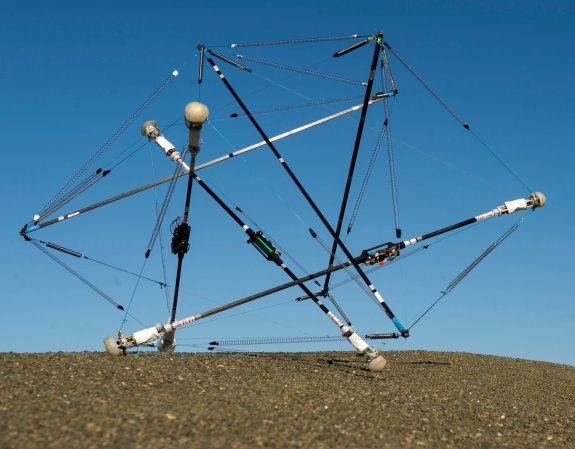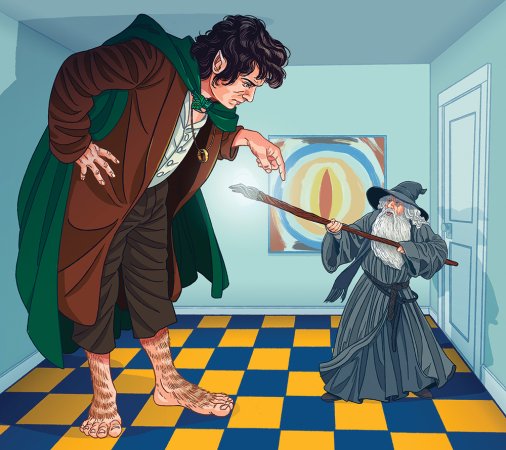

The 1902 silent film Le voyage dans la Lune (A Trip to the Moon) is often considered the world’s first science-fiction movie. In roughly twelve surreal minutes, a merry crew of “astronomers” dressed like wizards visit the moon by piling into a giant artillery shell and firing themselves from a very large cannon.
Once they crash-land at their destination, the astronauts descend into a cavern filled with mushrooms. They’re captured by the insect-people of the moon and taken even deeper underground—to the court of the moon-dwellers’ king. But they escape and hastily push themselves back down to Earth, abducting one of the insect-people in the process, before splashing down in the sea.
Of course, we do not send humans to the moon by literally shooting them there (or, at least, not directly). Nor are there creatures under the lunar surface waiting for us to make first contact. But that trip did get at least one aspect correct: There are caves on the moon.
We don’t yet know very much about them, but we know enough to make them compelling targets for future space explorers. In fact, one day, lunar caves could become our homes. They may give us a shelter from the elements that would otherwise batter the denizens of the lunar surface, and mission planners are already plotting expeditions to house-hunt on our ancient sibling.
If we’re going to live in a lunar cave, we’d better understand our home. Many Earth caves are formed from erosion, which is a nonstarter on a moon without air or running water. Instead, lunar caves are borne from volcanoes.
When hot lava erupts onto a much colder surface, it’s the outside that chills first. As the exterior of a lava flow hardens, the interior can stay molten, like the filling of an igneous eclair. Alternatively, hot lava can eat tunnels into the surrounding rock. Either way, when the remaining lava drains away, it leaves behind a hollow passage. Scientists call the resultant caves lava tubes.
You can find lava tubes on Earth, in volcanic landscapes like Iceland, Jeju, and the East African Rift. Most are a mile or two long at most, but not all. Kazumura Cave on the Big Island of Hawai’i is at least 40 miles long and, in some parts, over 65 feet wide. Some of the Undara lava tubes in Queensland, Australia wind for over 100 miles.

But when lunar volcanoes were active, they played by different rules. “The moon is an extreme environment,” says Tracy K.P. Gregg, a volcanologist at the University of Buffalo. “If we took [a volcano] and dropped it on the moon, we would see different things…just because of this extreme environment.”
Lava erupting into the cryogenic temperatures of the two-week-long lunar night would have cooled much more quickly, which helps lava tubes form. Moon lava is also generally runnier than Earth lava, allowing it to flow more quickly.
Other differences between the two worlds would also make lunar caves distinct from terrestrial ones. The moon, for instance, has one-sixth the gravitational force of the Earth, meaning objects on its surface are structured differently as they don’t have to withstand the same pull. Lunar caves might also be made from sturdier building material than the Earth, since many lunar rocks have the luxury of living without erosion.
“There’s no water,” says David Blair, a scientific computing coordinator at Brown University. “There’s no oceans…or rivers…or rain. And so [lunar] rock stays stronger, over longer periods of time, and more intact.”
Combined, those factors might mean that the moon’s lava tubes could dwarf even the largest of their terrestrial counterparts. When Blair was a graduate student at Purdue University, he computed just how big they could theoretically get. His work suggested that lunar lava tubes could be some 3 miles across—wide enough to comfortably fit the island of Manhattan.
Blair’s work shows that, even a half-century after the Apollo missions, we don’t really know much about what lunar lava tubes can do.
“There were some well-educated guesses made in the seventies…but they were based on outdated knowledge of lunar materials,” Blair says. “Despite that, people had just been citing those numbers for decades.”
Still, scientists can see what could be lava tubes’ fingerprints. For instance, the moon’s surface is striped with snaking channels that scientists call sinuous rilles. (Apollo 15 landed in one sinuous rille in 1971.) They might look like river beds at first, meandering for hundreds of miles—but, again, there’s no water.

There’s no scientific consensus yet on how sinuous rilles formed, but one theory holds that they started as lava tubes and became channels when, some time later, their roofs collapsed. If that’s true, then the observations do indeed back up the theory. “If you believe that sinuous rilles are collapsed lava tubes, then they are much longer and wider than lava tubes on Earth,” Gregg says.
It was thanks to the Kaguya spacecraft that scientists found more definitive evidence. Kaguya, a misshapen cuboid formally known as the Selenological and Engineering Explorer (SELENE), was launched by the Japan Aerospace Exploration Agency in 2007 to measure the moon’s gravitational field and observe its surface. Looking upon a rugged landscape of ancient volcanoes called the Marius Hills, one of Kaguya’s cameras captured an unusual hole about the size of a Boeing 747.
From the angle of its shadows, scientists concluded that the hole was deeper than it was wide, largely ruling out the possibility that it was an impact crater. And although the hole was in a land that had a fiery history, it lacked the telltale ashes or lava flows that would mark a volcanic eruption.
That left another intriguing possibility: What if the hole was actually a kind of skylight into a cave, created by its roof collapsing?
Scientists quickly accepted that last idea. “I think everyone in the [lava tube] community is comfortable with the idea that these collapsed pits…are the surface expression of buried lava tubes,” says Gregg.

Not only did NASA’s Lunar Reconnaissance Orbiter (LRO) revisit the hole in 2011, it found evidence for a number of others. Researchers have now identified at least a dozen such pits. Several years after LRO, the GRAIL mission found at least ten subtle dips in the moon’s gravity field. Researchers think they’re the fingerprints of underground caverns, over half a mile wide. That would make them lava tubes, and indeed far larger than any on Earth.
But scientists haven’t seen images from inside a lunar lava tube just yet, and until they do, they won’t be fully certain what they can do. “How big, how long, how extensive—that’s not clear,” says Angelo Pio Rossi, a geologist at Jacobs University Bremen in Germany.
Just because we don’t know much about them, however, doesn’t mean we’re not already preparing to dive deeper into them. The idea to use a lunar lava tube as a human habitat isn’t really new; it’s been around since at least the 1980s, and it’s a huge part of why scientists wanted to search for lava tubes in the first place.
But now that humans are returning to the moon—permanently, if all goes according to plan—there’s a new wave of interest in the idea.
On the surface, living underground is tempting—literally. If you want to live on the moon’s surface, you’ll have to deal with the potpourri of perils that space throws at you. You’ll face constant bombardment by small meteoroids, which don’t burn up without an atmosphere. The moon also lacks a magnetosphere strong enough to filter out much of the radiation that will hit you. And the temperature up there can be hot enough to boil water during the day, before dropping to cryogenic lows at night.
If you want to live in a cave, on the other hand, you’ll have built-in protection from some of those hazards. In a lava tube, since you’ve got a layer of rock above your head, you’ll be shielded from space rocks and ionizing space rays. And since you’re away from the constant shifting of sunlight and shadows, you won’t have to worry nearly as much about the drastic temperature swings.
Living underground may also allow moon-folk easier access to subsurface deposits of ice, a valuable source of water. It’s hard to understate how much easier that would make moon life; you wouldn’t have to worry about the costly business of transporting vital water from Earth.
But, again, we can’t be sure what lunar caves are truly like. We’ve never seen the inside of one. So, in addition to ensuring that temperatures and radiation levels are safe enough, what would we need to know?
“It’s kind of like buying a house,” says Gregg. “You don’t want to buy a house that’s about to fall down on you. Or rather, if you do, you’re going to buy the house with that knowledge and fix it up first, and then move in.”
For one, she says, you’d naturally want to make sure your home is stable. It’s no good to live in a cave if trying to build in one will cause debris to fall on your head. Lava tubes on Earth tend to have thin and delicate roofs. Their lunar counterparts might theoretically be bulkier and less fragile, but we can’t be sure yet, and every tube will be different.
For another, you’d want to ensure that you’ve got enough room to live comfortably, even if your stay is short. “You’re not going to send a lot of astronauts to live for two months if nobody can stand up straight,” says Gregg. Again, large enough moon caves exist in theory, but we’ve yet to take any measurements of one.
But if you can meet those requirements—and from what we know right now, there’s no indication you can’t—then you’re set. “If you can find the right tube system, I think they would be easy places for people to live,” says Gregg. “It’s prefab housing on the moon.”

We don’t yet know if the right tube system even exists, but before we search for an underground moon home, we can dive into one with the next best thing: Robots. Indeed, exploring such caves “is one of the next frontiers for NASA,” says Ali Agha, a researcher at Jet Propulsion Laboratory (JPL). And in the last decade, mission planners have proposed a number of ideas for autonomously exploring lava tubes.
But planning such an underground mission requires leaping logistical hurdles that few space explorers have faced before. How do you communicate with something that isn’t on the surface? How do you power a probe that sunlight doesn’t touch? And how do you actually get down there?
Cave-exploring efforts lurched forward in 2019 when the European Space Agency (ESA) broadcast a call for submissions. Five different groups sent plans to ESA, each addressing those questions with different ideas—tethered rovers, robot swarms, gravimetric surveyors. ESA has now narrowed those five down to two, and they’re currently conducting a more advanced study, with each of the two working on a different aspect of a single mission.
One group is focusing on how to enter a lava tube. Their solution is to use a crane, propping it at the edge of a skylight, where it can lower a rover into the cave. The connecting cable can double as a link to the rover, supplying it with power and allowing it to communicate with the surface and the Earth beyond.
No one’s ever put a crane on the moon, and it will operate differently in the lower gravity and nonexistent atmosphere. But there are reasons to build a crane beyond this one mission. Such construction technology could be vital to building future human bases, says Fermín Navarro, a member of the crane group, and a professor of mechanical engineering at the University of Vigo in Galicia, Spain.
The rover, called DAEDALUS , is the province of a second group who envision DAEDALUS as a sphere. There’s never been a spherical rover on another world, but the shape is particularly advantageous for exploring caves. A spherical rover can see on all sides, including beneath it, without being blocked by its own body.
“We very rapidly converged on the basic idea of having some robotic element that could work while descending a lunar pit and on the floor, without necessarily sacrificing visibility with the large belly of a rover,” says Rossi, the geologist who is a member of the rover group.
As DAEDALUS descends through the skylight, it will start to image its surroundings. Not only will this give scientists a glimpse into the lunar underworld, it could tell them how stable the walls are, and what materials are in them. The rover will scan the cave with lidar, allowing it to map the cave—and determine its roominess—even in the dark. And DAEDALUS will carry sensors to measure temperature and radiation.
Importantly, this is only a concept study. What comes out of it is still a long way from seeing the light of a launchpad. The first hurdle: in a few weeks, ESA will decide if the concept is worth pursuing, in accordance with its long-term plans for the moon. “If it’s feasible, we will continue,” says Navarro. If all goes well, this ESA mission could launch around the early 2030s.
Until then, geologists can estimate what we might expect from looking at lava tubes on Earth. By visiting such analogues, not only can scientists learn more about lava tubes in general—how they form and grow—they can test the equipment they might one day use on other worlds. They can practice navigating robots in tight and twisting environments, or they might try powering and communicating with a rover away from the sky.
The DAEDALUS team, for instance, has previously worked at Lanzarote in the Canary Islands. The caves there make for especially good lunar lava tube analogues, according to Rossi, because its volcanoes are very young, and its caves don’t have much in the way of soil or vegetation.

Half the world away, robots are also plying through the lava tubes of California’s Lava Beds National Monument to study them for signs of life as part of a NASA project called BRAILLE. The robots being trialled here build upon the work of Team CoSTAR, an international group that includes scientists and engineers from JPL.
“We have had the opportunity to test multiple classes of robots—wheeled, aerial, tracked,” says Agha, Team CoSTAR’s leader.
The team was formed to participate in the DARPA SubT Challenge, an ongoing competition where robots navigate simulated undergrounds such as tunnels, undercities and, indeed, caves. But their hopes lie far beyond Earth’s atmosphere, and they hope to apply what they’ve learned through the challenge to future missions on other worlds.
In particular, Team CoSTAR’s efforts are focused on autonomy and artificial intelligence. Their technology may someday allow future cave robots and make their own decisions, without needing to rely on ground control. It makes sense: If your rover is in a place that’s hard to reach, why not give the rover the power to do part of its job by itself?
According to Jennifer Blank, researcher at NASA’s Ames Research Center and leader of BRAILLE, rovers could soon map and explore caves on their own. They could also pick out their own points of interest—for instance, ice deposits or promising habitat sites.
Some humans are going even farther to prepare for cave living. In Iceland, a group of students are hoping to build an emulation of a lunar lava tube habitat. ESA runs a program called CAVES, which trains astronauts from all over the world inside, well, caves. CAVES can benefit spacefarers in multiple ways—cramped quarters and isolated tunnels can prepare astronauts for extended stays on the International Space Station.
It’s not just lunar caves that people want to explore—after all, lava tubes aren’t limited to the moon. Similar caves probably exist on the planet Mercury, Jupiter’s moon Io, and any other world that has lava like Earth’s. Lava tubes definitely exist on Mars, and have also been proposed as human habitats. It’s possible those caves were even shelters for—and might still house—Martian life. In fact, the red planet is Team CoSTAR and BRAILLE’s ultimate goal.
But for now, the moon is our next target—and although the depths of its caves are murky indeed, they’re coming more closely into focus with each passing year.

